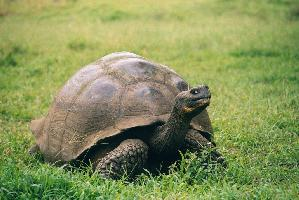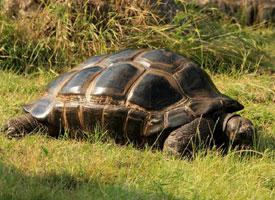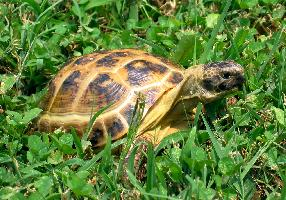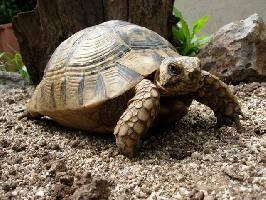
Známé také jako
- Želva řecká
Popis zvířete
The Greek tortoise (Testudo graeca), also known as the spur-thighed tortoise, is a species of tortoise native to North Africa, Southern Europe, and Southwest Asia. This species is characterized by its robust, domed shell, which serves as an effective defense mechanism against predators. The shell's coloration can vary significantly among individuals, ranging from dark browns to yellows, often adorned with intricate patterns that help camouflage the tortoise in its natural habitat.One of the distinguishing features of the Greek tortoise is the presence of spurs on its thighs, which is a trait that contributes to its common name, the spur-thighed tortoise. These tortoises exhibit sexual dimorphism, with females generally being larger than males. Adult Greek tortoises typically measure between 15 to 30 centimeters (6 to 12 inches) in length, depending on the subspecies and the environment in which they live.
Greek tortoises are herbivorous, feeding on a wide variety of vegetation, including grasses, flowers, and leaves. Their diet is high in fiber and calcium, which is crucial for maintaining their shell and bone health. In captivity, it's important to mimic their natural diet as closely as possible to prevent nutritional deficiencies.
The behavior of Greek tortoises is greatly influenced by the climate of their environment. They are most active during the cooler parts of the day, such as early morning and late afternoon, to avoid the extreme heat. During the hottest parts of the year, they may aestivate to conserve energy and moisture. Conversely, in cooler climates, they undergo brumation, a form of hibernation, during the winter months.
Greek tortoises are solitary animals, coming together only for mating purposes. Mating season typically occurs in the spring, and after a gestation period, females lay a clutch of eggs in a carefully dug nest. The eggs incubate for several months before hatching, with the young tortoises being fully independent from birth.
The Greek tortoise has a long lifespan, with individuals often living for several decades, and some records indicating lifespans of over a hundred years in captivity. This longevity, combined with their distinctive appearance and relatively easy care, makes them popular pets. However, potential pet owners should be prepared for the long-term commitment and specific care requirements, including proper diet, habitat, and temperature regulation, to ensure the health and well-being of these tortoises.
Unfortunately, the Greek tortoise faces several threats in the wild, including habitat destruction, pollution, and illegal poaching for the pet trade. These factors have led to declines in some populations, and the species is listed as Vulnerable on the IUCN Red List of Threatened Species. Conservation efforts are underway in many parts of their range to protect these iconic reptiles and their habitats, ensuring that they continue to thrive in the wild for generations to come.
Mapa výskytu
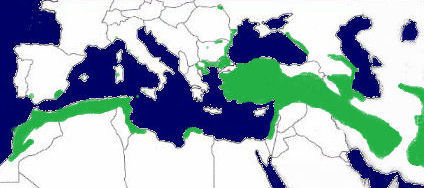
Podobná zvířata
Nové fotografie zvířat
Top 10 zvířat
- Chinese water dragon (Physignathus cocincinus)
- Galápagos tortoise (Geochelone nigra complex)
- Dolphin gull (Leucophaeus scoresbii)
- Japanese macaque (Macaca fuscata)
- Colombian red howler (Alouatta seniculus)
- Sea urchins (Echinoidea)
- Diana monkey (Cercopithecus diana)
- Moustached guenon (Cercopithecus cephus)
- Common reed warbler (Acrocephalus scirpaceus)
- Common house mosquito (Culex pipiens)
